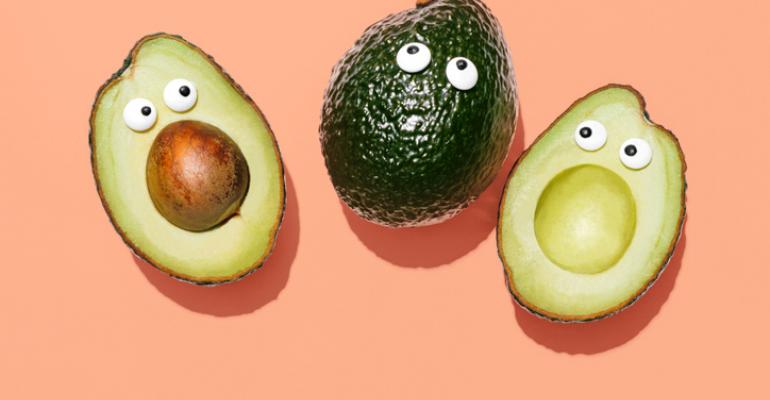You’ve probably worked to improve your conference sustainability—waste diversion, fewer single-serve plastics, and more—but have you thought much about the carbon footprint of the food you serve? The Greenbuild International Conference and Expo has, and the 3,500 plated lunches it served at McCormick Place in Chicago a few years back were 100 percent vegan.
What does a vegan menu have to do with sustainability? Many recent studies have documented that meat production uses far more energy, land, and water resources than growing fruits and vegetables. Consider the numbers from the Greenbuild Sustainability Report: Cutting meat, cheese, and eggs from its lunch menus “reduced Greenbuild’s carbon footprint by more than 9.35 metric tons of carbon dioxide equivalent (MTCO2 Eq).” According to the report, that’s the amount of greenhouse gas emissions produced from charging 1.2 million cell phones.
While low-carbon menu planning was just one small piece of a comprehensive sustainability effort around this 15,000-attendee annual event for architects, contractors, facility managers, and others involved in green buildings, it was a new effort for Greenbuild and one rarely seen in the meetings and event world. We went to the planners to find out more about the how and why of their vegan menu. First, however, here are the 100-percent vegan luncheon menus:
Women in Green Luncheon
• Simply Greens Salad, with baby mesclun greens, shaved fennel, radish, golden grape tomato, served with vegan vinaigrette dressing (on the side)
• Roasted Cauliflower Steaks, with Thumbelina carrots, asparagus tips, roasted wild mushrooms, beluga lentils, and red pepper coulis
• Seasonal fresh fruit cup
Summit & Workshop Luncheons
• Simply Greens Salad, with baby mesclun greens, shaved fennel, radish, golden grape tomato, served with vegan vinaigrette dressing (on the side)
• Grilled zucchini packets stuffed with ratatouille, served on a bed of sundried tomato, baby spinach, and quinoa, and topped with red pepper coulis and a balsamic reduction
• Seasonal fresh fruit cup
How did attendees react?
“While our event participants were understanding and supportive of the vegan options—especially the reasoning behind it—a few were still hoping for a meat-based dish, like a chicken or fish option,” said Rachel Motekaitis, formerly the senior show manager at Greenbuild, which is produced by the U.S. Green Building Council and Informa (MeetingsNet’s parent company). “At the risk of using a food pun, we went cold turkey on introducing vegan meals that year. Our attendees knew to not expect red meat [Greenbuild eliminated it from catered events a few years ago] but in hindsight, we could have had a few chicken or fish options, just to make sure everyone felt like they’re getting enough protein.”
Sustainability expert Amanda Simons, principal at Honeycomb Strategies, specializes in the hospitality and meetings industry and consults with Greenbuild. She said that attendees are tuned in to the issues around food and the environment. “The link between human health and the environment is intrinsic, and our attendees understand this. They also understand the carbon footprint created by animal-based food production. Of course, we will always face critics when we try something new, so while there may have been a few raised eyebrows, those reactions were few and far between. The hope is that this initiative helped raise awareness of vegan food options and is a catalyst for change as Greenbuild participants return to their everyday lives.”
Was the entire conference 100 percent vegan?
All of Greenbuild’s major lunches and catered events were 100 percent vegan in Chicago. However, some boxed lunches and off-site events had a wider menu, said Simons. “The catering at the Greenbuild Celebration was 60 percent vegan, and another off-site event, the Leadership Awards Reception, was 40 percent vegan. Back at McCormick Place, we had boxed lunches in a few areas which were 30 percent vegan, and we had the in-house concession stands at the convention center add more vegan options to their selections.”
How did the cost compare?
“It is tough to provide true savings since different regions price the same items differently. However, for the Chicago show, vegan items were approximately 20 percent less expensive than non-vegan items available for us to order,” said Motekaitis.
What was the reaction from the caterer?
“We worked with Savor as the in-house caterer at McCormick Place. There was no pushback at all on the vegan menu,” said Motekaitis. “They also worked hard to provide as much local, regional, and seasonal produce options as possible. Their support was monumental in helping Greenbuild achieve its goals. They were also quick to change their catering menu to eliminate individually packaged and other unsustainable options. They also helped us to eliminate plastic straws and soda from McCormick Place during Greenbuild.”
Were there benefits beyond shrinking your carbon footprint?
“Regarding planning and food restrictions, almost all our catered events were also gluten-free. We had no special requests this year after providing a largely vegan and gluten-free menu,” says Motekaitis.
Would you do it again?
The following year's Greenbuild show did reintroduce meat, but was still planned with mostly vegan catered events. There were some other modifications as well, says Simons, including making soda available again. “We worked with Coca-Cola to offer a healthier drink option: a natural soda.”
Any advice for a meeting planner considering an all-vegan menu?
“Make sure you have a ‘why’ behind the action,” Simons says. “An all-vegan menu is relatively easy to implement, but it also requires a keen sense of awareness of the environmental impacts imposed by events and an understanding that conversations must start very early in the planning process. Knowledge of the event's audience is also key; an all-vegan menu won’t be the right fit for every event, and that’s okay. Because there are multiple avenues to sustainably produce an event—printing, shipping, reduction of plastic, and more. An all-vegan menu is one slice of that.”





